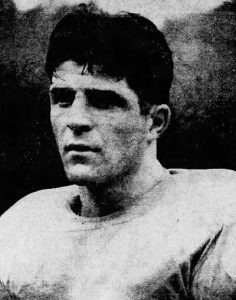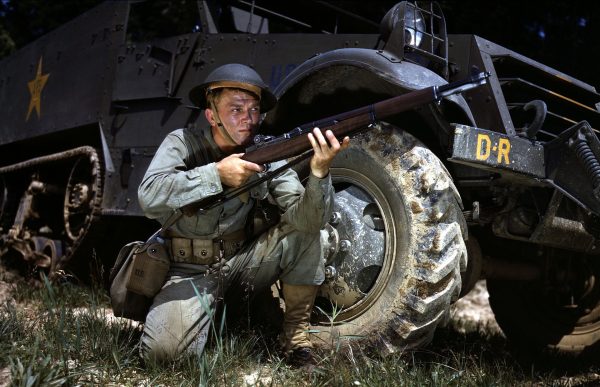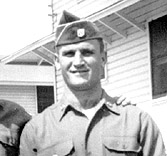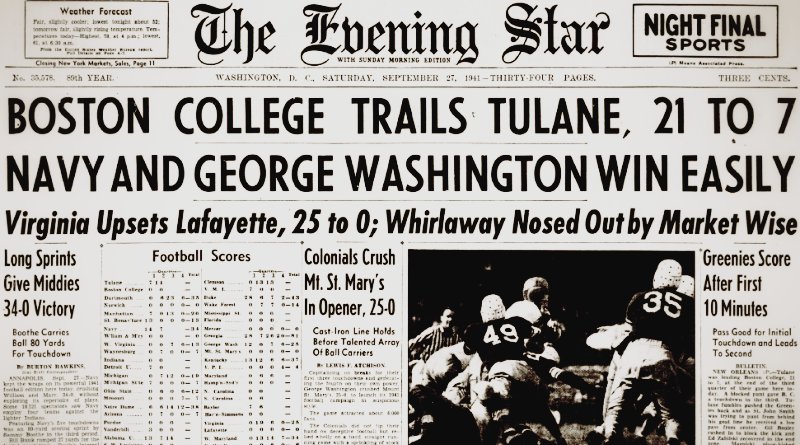World War II Chronicle: September 27, 1941
Click here for TODAY’S NEWSPAPER

Pictured on the front page is George Washington University back Walt Fedora, who was also pictured in yesterday’s sports section. The Brooklyn (football) Dodgers draft Fedora in 1942 and he plays eight games before joining the U.S. Navy.
The first “Liberty” ship, Patrick Henry, has been launched (see page two). 18 different American shipyards produce 2,710 of these vessels over the course of the war (averaging three ships every two days). 80 years later just two remain operational and three are museum ships.
Ohio State won it’s opener against the University of Missouri today, led by a coach who was running Massillon Washington High School’s squad last year. Paul Brown will lead the Buckeyes to a national title in 1942, and despite being limited to play with 17-year-olds who hadn’t yet enlisted in the Armed Forces, Ohio State still won three games that year, defeating Illinois, Pittsburgh, and 18th-ranked Missouri. The Navy commissioned Brown in 1944 and named him head coach of the Great Lakes Bluejackets.
Brown’s predecessor at Great Lakes, Paul D. “Tony” Hinkle, was deployed to the Pacific Theater after coaching Great Lakes to an 8-2 record during the 1943 season, ranking sixth in the country by the AP. Before and after his Naval career, Hinkle coached Butler University’s baseball, basketball, and football teams. In 1929 he led Butler’s basketball team to a national championship. You may not have heard of Butler (I hadn’t until I saw a team bus parked outside of the Southeast Missouri State University football stadium yesterday), but back when Hinkle was coaching, his teams were juggernauts.
After the war, Brown co-founded the All-America Football Conference (AAFC) Cleveland Browns, and won the championship all four years of the AAFC’s existence. His club became the NFL’s Cleveland Browns franchise. If you ever wondered what a “Brown” is — and I just pondered this with a friend the other day — the club was named after coach Paul Brown. He was not a fan of the team being named after him and seems to be behind the myth that the team voted to be the Brown Bombers (shortened to the Browns), after heavyweight champion Joe Louis.

We have focused heavily on sporting events (to be fair, 1941 was one of the greatest seasons in baseball history), so switching gears to military news: page five reports that the M1 Garand rifle is making recruits into marksman in record time. Soldiers have a much easier time hitting their targets with the new semi-automatic rifle than the bolt-action M1903 Springfield it replaces, which American infantrymen have carried for over 30 years. Springfield Armory has been producing 600 M1s a day since January and the Army says it has completely equipped its forces Garands before the end of 1941.
Excluding their use as sniper rifles or with commando units, Springfields may be phased out for the Army on paper, but some infantry units in fact continue to use them throughout the war. Marine riflemen on Guadalcanal, for example, carried M1903s. And new A3 and A4 model Springfields were still being delivered in 1944. The M1, which Gen. George S. Patton famously declared “the greatest battle implement ever devised” is officially retired from active duty units in 1965, but reserve and guard outfits will still carry M1s into the 1970s (as with the M1903, excluding it’s role as a sniper platform).
Fun facts: Brown quarterbacked for Massillon when he was a high school student. His predecessor was Harry Stuhldreher, one of Notre Dame’s legendary “Four Horsemen.”
Speaking of Notre Dame, legendary coach Ara Parseghian played for the Bluejackets under Brown, and also on the AAFC Browns, and would later say that watching Brown coach was a “priceless” experience.

After failing to make the Ohio State football team, Brown transferred to Miami (Ohio), where he succeeded Weeb Ewbank at quarterback. Ewbank would be one of Brown’s assistants at Great Lakes before coaching the Baltimore Colts to two NFL titles (1958 and 59 seasons) and the Super Bowl III champion New York Jets. Miami coach Don Shula played for both Brown and Ewbank before leading the Miami Dolphins to the first undefeated season since Brown’s 1948 Browns. Incidentally, Shula served in the Ohio National Guard during the Korean War. Shula replaced Ewbank as Baltimore’s head coach in 1963.
Evening star. (Washington, D.C.), 27 September 1941. Chronicling America: Historic American Newspapers. Lib. of Congress.
https://chroniclingamerica.loc.gov/lccn/sn83045462/1941-09-27/ed-1/
